Today’s Current Affairs: 28th Apr 2023 for UPSC IAS exams, State PSC exams, SSC CGL, State SSC, RRB, Railways, Banking Exam & IBPS, etc
Table of Contents
Meeting Of The Shanghai Cooperation Organisation Interbank Consortium (SCO IBC):
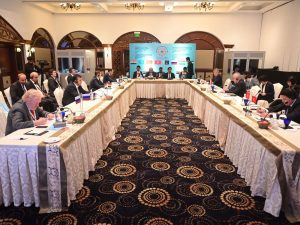
Under the chairmanship of India, the XIX Council Meeting of the Shanghai Cooperation Organisation Interbank Consortium (SCO IBC) was held in Goa.
- SCO Interbank Consortium was established by the member countries of the Shanghai Cooperation Organisation on 26 October 2005.
- It provides funding and bank services for investment projects sponsored by the governments of the SCO member states.
- The main objectives of the consortium are to provide financial services, promote trade, and facilitate investment among the member states.
- The SCO IBC Council meets ad hoc upon the consensus of all of the parties at least once per year.
- The Presidency of the Council is carried out on a rotational basis.
- It consists of major banks from the member countries, such as the Industrial and Commercial Bank of China, the National Bank of Kazakhstan, and the Bank of Russia.
- The first meeting of the SCO Interbank Association was held in Beijing on 21–22 February 2006.
Lesser Flamingo:

After a six-year absence, the lesser flamingos have finally found their way back to Pulicat Lake.
- Lesser Flamingo is the smallest of all flamingos but has the largest population.
- It possesses the “hallux” or hind toe that some other flamingos do not have.
- Males are a little taller than females.
- It inhabits coastal and inland wetlands.
- Africa, Asia continents and in that especially Sub-Saharan Africa, South Asia, North Africa
- They mostly eat blue-green algae but occasionally will take crustaceans and small insects.
- It is serially monogamous, meaning they form pairs that remain together while they are raising the young
- Conservation status
- IUCN: Near Threatened
- Pulicat Lake is the second-largest brackish water lake in the country.
- It lies at the border of the states of Andhra Pradesh and Tamil Nadu. (Majorly lies in Andhra Pradesh)
European Free Trade Association:

India and the four-nation bloc EFTA recently discussed ways to resume negotiations for a free trade agreement with a view to strengthening economic ties between the two regions.
- European Free Trade Association (EFTA) is an intergovernmental organization established in 1960 by the Stockholm Convention.
- Objective is to promotes free trade and economic integration between its members within Europe and globally.
- EFTA currently has 4 member countries: Iceland, Liechtenstein, Norway and Switzerland.
- The EFTA countries have developed one of the largest networks of Free Trade Agreements (FTAs).
- These FTAs span over 60 countries and territories, including the European Union (EU).
- In contrast to the EU, EFTA is not a customs union.
- This means that the individual EFTA States are free to set their own customs tariffs and arrange other foreign trade measures vis-à-vis the non-EFTA States.
- EFTA’s highest governing body is the EFTA Council.
- It generally meets 8 times a year at the ambassadorial level and twice a year at the ministerial level.
- The headquarters of the EFTA Secretariat is located in Geneva.
- It assists the EFTA Council in the management of relations between the 4 EFTA States and deals with the negotiation and operation of EFTA’s FTAs.
- EFTA Surveillance Authority (ESA) monitors compliance with European Economic Area (EEA) rules in Iceland, Liechtenstein and Norway.
- EFTA Court is based in Luxembourg and has the competence and authority to settle internal and external disputes regarding the implementation, application or interpretation of the EEA agreement.
- European Economic Area (EEA) consists of the Member States of the European Union (EU) and three countries of the European Free Trade Association (EFTA)(Iceland, Liechtenstein and Norway, excluding Switzerland).
India’s First Solar City:

Sanchi, a world heritage site located in Madhya Pradesh, is all set to become India’s first solar city.
- It is located in the Raisen district of Madhya Pradesh.
- It lies in an upland plateau region just west of the Betwa River.
- Sanchi is a religious place with historical and Archaeological significance.
- It has India’s best-preserved group of Buddhist monuments, collectively designated a UNESCO World Heritage site in 1989.
- The site of Sanchi comprises a group of Buddhist monuments (monolithic pillars, palaces, temples and monasteries), all in different states of conservation, most of which date back to the 2nd and 1st centuries B.C.
- It is the oldest Buddhist sanctuary in existence and was a major Buddhist centre in India until the 12th century A.D.
- The most prominent stupa found here is the Sanchi Stupa, also known as the Great Stupa.
- Other remains at the site include several smaller stupas, an assembly hall (chaitya), an Ashokan pillar with inscriptions, and several monasteries (4th–11th century CE).
- Sanchi Stupa was built by the Mauryan emperor Ashoka in the third century BC.
- It enshrines religious relics or remains of the Buddha and his most revered disciples.
- It is enclosed by a massive stone railing pierced by four gateways, which are adorned with elaborate carvings (known as Sanchi sculpture).
- The stupa itself consists of a base bearing a hemispherical dome (anda), symbolizing the dome of heaven enclosing the earth.
Code On Social Security 2020 And Gig Workers:

The Ministry of State for Labour and Employment told the Lok Sabha that the definition of ‘gig worker’ and ‘platform worker’ has been provided for the first time in the Code on Social Security (SS), 2020.
- The Code aims to regulate the organized/unorganized (or any other) sectors and extend social security benefits, during sickness, maternity, disability, etc. to all employees and workers across different organizations.
- The Code undertakes integrating the following 9 labour laws relating to social security into one integrated Code:
- The Code has widened coverage by including the unorganised sector, fixed term employees and gig workers, platform workers, inter-state migrant workers in addition to contract employees.
- The Code applies to everyone on wages in an establishment, irrespective of occupation
- All records and returns have to be maintained electronically. Digitisation of data will help in exchange of information among various stakeholders/funds set up by the Government, will ensure compliance and also facilitate governance.
- The provision of maternity benefits has not been made universal and is presently applicable for establishments employing 10 workers or more.
- The definition of ‘establishment’ in the proposed code did not include the unorganised sector.
- Hence, women engaged in the unorganised sector would remain outside the purview of maternity benefits.
- Any failure to deposit employees’ contributions not only attracts a penalty of Rs 100,000, but also imprisonment of 1-3 years.
- In the case of repeated offence, the penalties and prosecution are severe, and no compounding is permitted for repeated offenses.
Gig workers:
- According to the Code on Social Security, 2020 (India), “A gig worker is a person who performs work or participates in work arrangements and earns from such activities, outside of the traditional employer-employee relationship.”
- They are independent contractors, online platform workers, contract firm workers, on-call workers and temporary workers.
6th Edition Of One Earth One Health – Advantage Healthcare India 2023:
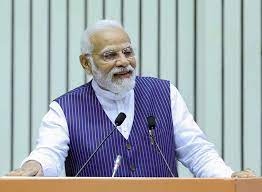
The Prime Minister inaugurated the 6th Edition of One Earth One Health – Advantage Healthcare India 2023 meet and expressed India’s commitment to making healthcare accessible and affordable not only for its citizens but for the whole world.
- The need for an integrated, inclusive, and institutional global response to healthcare challenges was discussed and India’s traditional healthcare systems that holds many answers to stress, and lifestyle diseases was highlighted.
- The two-day conclave, attended by Health Ministers of several countries and other stakeholders from public and private sectors, aims to promote global collaborations and partnerships for achieving Universal Health Coverage through value-based healthcare.
- The event also aims to showcase India’s strength in medical value travel as an exporter of healthcare workforce providing value-based healthcare services and its emergence as a major hub for world-class healthcare and wellness services.
Big Catch-up Initiative:

A global effort called “The Big Catch-up” was announced by various health organizations
- Implementing Partners are WHO, UNICEF, Gavi, the Vaccine Alliance, Bill & Melinda Gates Foundation, Immunization Agenda 2030, and other health partners
- Objective is to Boost childhood vaccination rates and reverse declines caused by the COVID-19 pandemic
- 20 countries including India, where three-quarters of the children who missed vaccinations in 2021 live
- It will Strengthen healthcare workforces, improve health service delivery, build demand for vaccines, and address obstacles to restoring immunization
- Current coverage In India, full immunization coverage among 12–23-month-old children increased from an estimated 62% in 2015–2016 to 76% in 2019–2020.
- Immunisation Agenda 2030 (launched in 2021) has set a target of avoiding 50 million vaccine-preventable infections in this decade.
- It intends to reduce the number of zero-dose children by 50%. And achieve 90% coverage for essential vaccines given in childhood and adolescence.
Quasars:
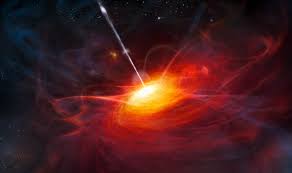
According to a new study Quasars the brightest and the most powerful objects in the universe
- The quasi-stellar radio sources (Quasars) were first discovered six decades ago.
- These are very luminous objects in faraway galaxies that emit jets at radio frequencies.
- They are located in supermassive black holes, which sit in the centre of galaxies.
- These are formed by the energy emitted by materials spiralling around a black hole right before being sucked into it.
- Most quasars are larger than our solar system. A quasar is approximately 1-kilo parsec in width.
- When galaxies collide, it pushes the gas from the outer reaches of the galaxies to the centre.
- As the supermassive black hole gorges on the gas, it releases ferocious fountains of energy in the form of radiation, leading to the quasar.
United Nations Permanent Forum On Indigenous Issues (UNPFII):
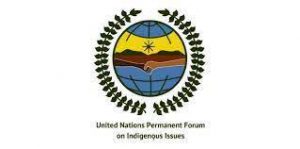
UNPFII called for inclusion of indigenous people in socio-economic development, and conservation of the environment.
- The United Nations Permanent Forum on Indigenous Issues (UNPFII) is a high-level advisory body to the Economic and Social Council.
- The Forum was established on 28 July 2000 by resolution 2000/22.
- It has the mandate to deal with indigenous issues related to economic and social development, culture, the environment, education, health and human rights.
- The first meeting of the Permanent Forum was held in May 2002, with yearly sessions thereafter.
- The Forum usually meets for 10 days each year, at the UN Headquarters in New York.
- The Permanent Forum is one of three UN bodies that is mandated to deal specifically with indigenous peoples’ issues.
- The others are the Expert Mechanism on the Rights of Indigenous Peoples and the Special Rapporteur on the Rights of indigenous peoples.
- The UN Permanent Forum on Indigenous Issues is the largest international gathering of Indigenous Peoples, with more than 1000 participants expected to attend.
- The 22nd Session of the United Nations Permanent Forum on Indigenous Issues (UNPFII) will convene in New York from 17 to 28 April 2023.
- It has the theme “Indigenous Peoples, human health, planetary and territorial health and climate change: a rights-based Approach”.
Thirunelly temple : Urge To Conserve
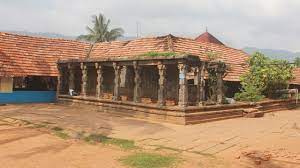
The Indian National Trust for Art and Cultural Heritage (INTACH) has urged the government to conserve the Thirunelly temple.
- The Thirunelly Maha Vishnu temple is an iconic temple in Wayanad, Kerala near Brahmagiri hills.
- It is also known as ”Sahyamala Kshetram” and ”Kashi of the South”.
- Thirunelly Temple embodies classical, traditional Kerala architecture.
- A famous pilgrim centre, this temple, which is dedicated to Lord Vishnu.
- It is considered an important pilgrimage centre for Hindus.
- It is located at the confluence of three rivers – Papanasini, the holy river, which is believed to have the power to wash away sins, Kudamurutti, and Koothappuzha.
- The temple has a unique circular structure made of granite stones, which is believed to have been constructed by Lord Brahma himself.
- Thirunelli Temple is the only temple in the world where the devotees can perform all the rituals related to one’s life, starting from birth to death and life after death.
Tughlaqabad Fort : ASI To Remove Encroachments

The Delhi HC asked the ASI to remove encroachments around the Tughlaqabad Fort.
- The Tughlaqabad Fort in Delhi which is in complete ruins now, was built by Ghiyasudddin Tughlaq.
- Ghiyasudddin Tughlaq was the first Sultan of the Tughlaq Dynasty in 1321.
- It lends its name to the nearby Tughluqabad residential-commercial area as well as the Tughluqabad Institutional Area.
- Ghiyasuddin Tughluq also built the Qutub-Badarpur Road, which connected the new city to the Grand Trunk Road.
- The road is now known as Mehrauli-Badarpur Road.
- Surroundings are an important biodiversity area within the Northern Aravalli leopard wildlife corridor stretching from Sariska Tiger Reserve to Delhi.




